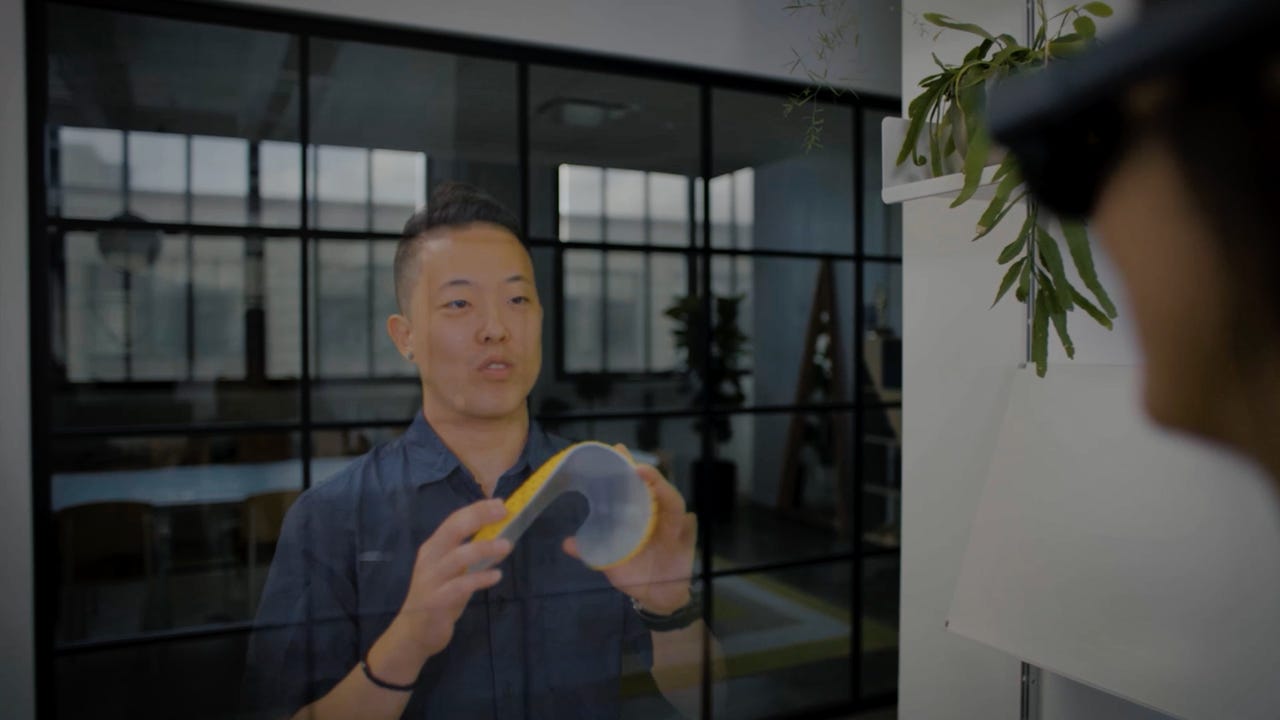Healthcare's next big innovative leap: Holograms?


For the past 20 years, Cisco has equipped health care organizations with a broad range of technologies, from networking equipment to collaboration software and digital security. The company is now betting that it can power healthcare services of the future -- with holograms.
Last year, Cisco unveiled Webex Hologram, a service that brings augmented reality to its collaboration platform. Now, the tech giant is working with medical professionals to find the right use cases for its hologram technology, betting that the industry is ready to embrace more immersive experiences.
Innovation
"Care delivery has evolved," Cisco's Kedar Ganta said to reporters recently, ahead of this week's Healthcare Information and Management Systems Society (HIMSS) conference.
"What we have seen until now is that technology is deployed in care facilities, where everyone has to go," he said. "Now, the technology is fading into the background."
The evidence of this evolution was clear during the pandemic, when virtual care became a standard experience. Quarantined COVID-19 patients communicated with their doctors and loved ones with video platforms like Webex. Regular checkups and doctor visits were replaced with telehealth calls. All the while, doctors and researchers were communicating and collaborating with each other virtually, just like professionals in every other sector.
"Overnight, healthcare changed from in-person to a call, a click, a chat," said Troy Yoder, Cisco's global healthcare innovation leader. At the height of the pandemic, he said, "Cisco's digital front door was a critical tool -- for primary care doctors, ambulatory surgery centers, call centers, temporary field hospitals. Everybody relied on Cisco technology."
During Cisco's Q3 2020 earnings call, CEO Chuck Robbins touted the mobile healthcare services the company was offering and suggested the health sector's investments would continue to grow.
"I think telehealth is here finally," he said, "and I think that industry will continue to work and build out a more robust architecture to support telehealth, as opposed to what we put together as quickly as we could with them over the last few months."
A year later, Robbins was touting Cisco's double-digit growth in healthcare.
Still, deploying hologram technology is a big leap from simply clicking on Webex for a virtual doctor's call. Instead of the virtual avatar many have come to associate with the "metaverse," Webex Hologram users can see photorealistic, real-time holograms of actual people they're communicating with.
Webex Hologram is used with AR headsets, such as Magic Leap and Microsoft HoloLens, and the quality of interactions is limited by the headsets, according to Cisco product manager Edel Joyce. "That's where we see some of the challenges, but as we see the headset industry evolve, that will get a lot easier," she said. Already, the experience has improved with the Magic Leap 2.
In addition to seeing their collaborators as holograms, Webex Hologram users can see physical content and digital content in 3D -- and users can co-manipulate content.
So far, according to Ganta, the primary healthcare use case is remote training -- helping medical students look at a 3D model of a human body part while watching simulations of a medical procedure.
The service could also benefit engineers as they work with doctors to design medical implants. Teams could use holograms to see how the implant would fit in a body before even manufacturing a prototype.
Meanwhile, a leading medical device company is using Webex Hologram in a trial to see if salespeople can use it to train physicians to assemble and use new surgical devices.
While Cisco is still exploring the right healthcare use cases for Webex Hologram, it already has customers using the service, including some in the apparel industry who use it for clothing design. Additionally, McLaren Racing has used it for designing cars, training drivers, and marketing -- bringing drivers into fans' homes.